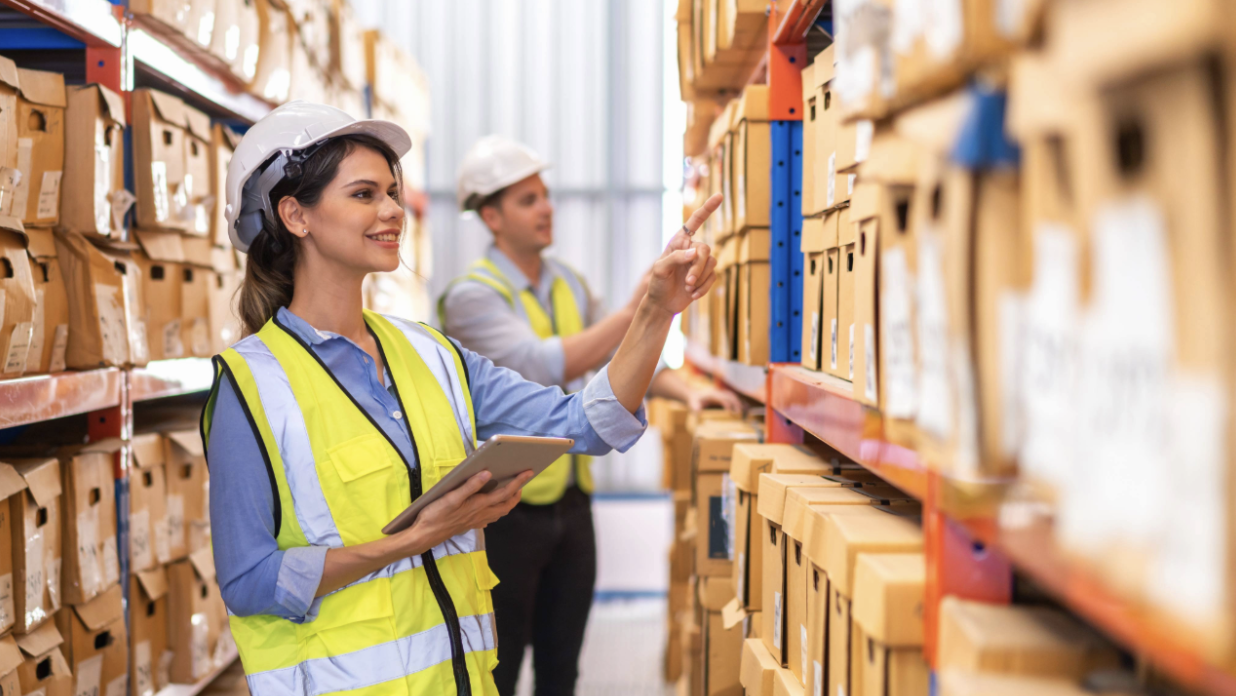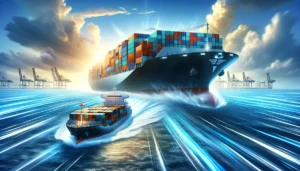Introduction: Navigating the US Customs Clearance Process
Navigating the intricate maze of the US customs clearance process can be a daunting task, especially for those new to international trade. Understanding the essentials of customs clearance is crucial for ensuring your goods cross borders smoothly and in compliance with all regulations. This journey into the world of customs involves intricate details, from adhering to international trade laws to liaising with customs authorities. Each step in clearing customs is pivotal in moving your goods efficiently and legally. Whether you’re an experienced importer or new to the game, this guide demystifies the customs clearance process, offering you the knowledge and confidence needed to navigate these complex waters. Let’s dive into the depths of customs regulations and procedures, ensuring your next international shipment is a success.
Understanding Customs Clearance in the USA
The key to a smooth customs clearance process lies in the meticulous preparation of necessary documents. Essential paperwork includes a Commercial Invoice, which details the transaction between buyer and seller, and the Customs Declaration Form, a pivotal legal document that provides information about your goods to customs authorities. These documents help customs officers determine the applicable customs duties and taxes.
The Customs Clearance Process: An Overview
What is the Customs Clearance Process while Importing from China?
When importing goods from China to the USA, the customs clearance process begins the moment your shipment enters American territory. It involves several steps, starting with filing the necessary documents such as the Bill of Lading and Commercial Invoice. Customs and Border Protection (CBP), a government agency, oversees this process. They ensure that all imported goods comply with the United States’ laws and regulations, which include the Harmonized Tariff Schedule. During this phase, customs officers and agents meticulously inspect the shipment and its documentation to ensure everything is in order.
Tax and Duty Payment
One of the critical stages in customs clearance is the calculation and payment of taxes and duties. These are determined based on the value and type of the imported goods, following the guidelines of the Harmonized Tariff Schedule. As an importer, it’s your responsibility to understand these charges and make timely payments. Failure to do so can lead to delays in customs clearance. Engaging a customs brokerage can help navigate these complexities, ensuring the correct duties are paid and compliance with all customs regulations.
How long does the customs clearance process take?
The duration of the customs clearance process can vary. Factors such as the accuracy of the provided documents, the nature of the goods, and the efficiency of the customs brokerage can influence the timeline. Typically, it can take anywhere from a few hours to several days. Air freight usually clears faster than ocean freight. However, unexpected delays can occur, especially if a shipment requires detailed inspection or if there’s a backlog at the port of entry. It’s crucial to have all the documents in order and work closely with customs officials to clear customs as swiftly as possible.
Key Aspects of Customs Clearance
A fundamental aspect of the customs clearance process is the accurate calculation of taxes and duties. These costs are primarily determined by the Harmonized Tariff Schedule (HTS), which classifies goods imported into the country. Customs duties vary depending on the type and value of the goods, as well as the country of origin. Importers must be thorough in declaring the value of their goods to customs authorities to ensure the correct amount of duty is applied. Underestimating or inaccurately reporting these values can lead to penalties and delays in customs clearance.
Incoterm Choice and Payment of Taxes and Duties
The choice of International Commercial Terms (Incoterms) plays a crucial role in the payment of taxes and duties. Incoterms define the responsibilities of buyers and sellers in international transactions, including who is responsible for paying duties and taxes. For instance, under Delivered Duty Paid (DDP), the seller bears all risks and costs, including duty payments, until the goods are delivered to the buyer. In contrast, with Ex Works (EXW), the buyer is responsible for the entire shipping process, including customs clearance. Understanding these terms is crucial for a smooth transaction and customs process.
Consider What Goods You’re Shipping
The nature of the goods you are shipping also significantly impacts the customs clearance process. Certain products may be subject to additional regulations, inspections, or even bans under specific customs laws. For example, perishable goods, hazardous materials, or items under trade restrictions require special attention and documentation. Familiarizing yourself with the customs and border protection regulations specific to your product type is essential to avoid any compliance issues that could delay your shipment. This awareness ensures that the process of customs clearance is as efficient and trouble-free as possible.
Choosing Your Customs Clearance Partners
Combining these services can be highly beneficial, streamlining logistics and reducing confusion. This unified approach offers a consistent point of contact, vital in managing complex international shipping. Avoiding variable pricing is another benefit, as one company overseeing the process can offer more predictable and cost-effective pricing, avoiding hidden costs or inconsistencies that may arise with multiple providers.
Is it a Good Idea to Self-handle Customs Clearance Process?
While some consider it, customs brokers specialize in legal and regulatory aspects, ensuring compliance and managing documentation and tax calculations. Freight forwarders focus on logistics, coordinating transportation and cargo handling. Utilizing their expertise is recommended, as they also provide valuable consultation on international trade strategies and compliance, reducing the risk of costly mistakes.
Given the complexity of international trade regulations and the risks involved, including legal issues or delays, utilizing the expertise of customs brokers and freight forwarders is generally recommended. They not only manage the practical aspects of shipping but also provide valuable consultation on international trade strategies and compliance, reducing the likelihood of costly mistakes.
Managing the Customs Clearance Timeline
Typically, customs clearance can be quite swift, often taking less than 24 hours under normal circumstances. However, this duration can vary depending on several factors, including the accuracy and completeness of the required documentation, the type of goods being shipped, and the specific regulations of the destination country. In cases where documents are missing or goods require inspection, the process can extend from a few days to several weeks.
How can one check the status of goods in the customs clearance process?
To monitor the progress of goods during customs clearance, importers or their representatives can typically track the status through the courier service or shipping company’s tracking system. This system often provides updates on the shipment’s location and status, including when it has entered customs and when it has been cleared. For a more detailed update, especially if there are delays or additional information is required, contacting the customs broker or freight forwarder directly is advisable. They can provide more specific information about the status of the clearance process and any potential issues that may need addressing.
Ensuring that all documentation is accurate and complete is key to avoiding delays in customs. It’s also beneficial to be aware of peak shipping periods, which can cause congestion and longer processing times.
Dealing with Challenges in Customs Clearance
What Happens if the Import Shipment Fails to Get Customs Clearance?
If an import shipment fails to get customs clearance, it can face several issues. The goods might be held at the port of entry, incurring storage fees. This situation typically arises due to missing or incorrect documentation, non-compliance with customs regulations, or if the shipment contains prohibited items. If the issues are not resolved, the goods might be returned to the sender or, in some cases, seized by customs. Furthermore, the importer could face fines and penalties for non-compliance, which could be substantial depending on the severity of the violation. It is crucial to ensure that all necessary documentation is accurate and complete, and that you comply with all relevant customs regulations to avoid such issues.
Can a shipment be held after passing customs clearance?
Yes, a shipment can be held even after passing customs clearance, although this is less common. This can happen if there are any concerns or irregularities detected after the initial clearance, such as issues related to the declared value of goods, or discrepancies in documentation. In some cases, inspections by other government agencies or regulatory bodies might be required if the goods fall under specific categories that require additional clearance. It’s essential to ensure that every aspect of the shipment, from documentation to compliance with all relevant laws and regulations, is meticulously managed to avoid such post-clearance issues.
Inspection of Documents
Upon submission, your documents undergo a thorough inspection by customs officials. This is where the expertise of a customs broker can be invaluable. Customs brokers, well-versed in customs regulations and requirements, ensure that all paperwork is accurately prepared and compliant with international trade laws. They act as intermediaries between you and the customs authority, navigating the complexities of customs entry procedures and liaising with customs officers on your behalf.
Always Check International Trade Laws
It’s imperative to stay updated with international trade laws, as these can significantly impact the customs clearance process. Each country imposes import duties and taxes based on its regulations, and it’s essential to be aware of these when shipping internationally. Customs authorities strictly enforce these laws, and any non-compliance can result in delays or penalties. An independent customs broker or a customs brokerage firm can provide valuable guidance in this area, ensuring that your international shipments meet all legal requirements and clear customs without any hitches.
Navigating the customs clearance process in the USA demands an understanding of various documents, the importance of accurate inspection, and a thorough knowledge of international trade laws. Whether you’re working with an experienced freight forwarder or handling the process independently, being well-prepared and informed is key to a successful customs experience.
Tips for Efficient Customs Clearance
6 Tips on Making the Clearance Process Much Easier
- Thorough Documentation Preparation: Ensuring all necessary documents, such as commercial invoices, packing lists, and bills of lading, are complete and accurate is vital to avoid delays.
- Understanding Customs Regulations: Being familiar with the customs regulations of both the exporting and importing countries helps ensure compliance and smooth processing.
- Efficient Communication with Customs Authorities: Maintaining clear and prompt communication with customs officials can help address any queries or concerns quickly.
- Strategic Planning and Timing: Planning the logistics of the shipment and timing the submission of required documents can prevent unnecessary storage or demurrage charges.
- Leveraging Technology: Utilizing technology for documentation and process management can provide competitive advantages and lower costs.
- Working with Experienced Customs Brokers: Customs brokers can provide expertise in managing customs clearance, helping to navigate complex regulations and paperwork.
Tips for New Importers for Customs Clearance
- Familiarize Yourself with Key Terminology: Understanding customs-related terms can help you navigate the process more effectively.
- Cross-Train Your Staff: Ensure more than one person in your organization understands customs procedures to cover for absences.
- Don’t Try to Circumvent the System: Always adhere to regulations and avoid trying to exploit loopholes, as this can lead to severe penalties.
- Pay Duties and Taxes Promptly: Timely payment of required fees helps prevent delays at the border.
- Build Good Relationships in the Supply Chain: Having good relationships with all parties involved in the supply chain, including customs brokers and transport providers, can facilitate smoother transactions.
- Be Prepared for Inspections: Ensure all your goods comply with regulations and are ready for any potential inspections by customs authorities.
Payment and Duties in Customs Clearance
In international trade, particularly under the Incoterms rules, the responsibilities for payments, taxes, and duties depend on the agreed terms between the buyer and seller. Generally, the importer is responsible for paying import duties and taxes. These duties are usually calculated based on the value of the goods, their type, and origin. Taxes can include Value Added Tax (VAT) or Goods and Services Tax (GST), depending on the importing country’s tax system. Additionally, there might be other fees associated with customs clearance, including processing or handling charges.
Who pays for customs clearance in Delivery at Place (DAP)?
Under the Incoterms 2020 DAP (Delivery at Place), the seller is responsible for moving the goods from origin until their delivery to the agreed disposal place, ready for unloading at the destination. The seller bears the costs and risk until the delivery of goods to the named place. However, the buyer is responsible for import customs clearance, including the payment of duties and taxes. In DAP, the seller pays for export customs, and the buyer covers import customs clearance, duties, and taxes.
Do I need to pay import duties when exporting goods?
When exporting goods, the exporter typically does not pay import duties. Import duties are generally the responsibility of the importer in the destination country. The exporter must ensure compliance with export regulations and may need to pay for export-related costs, but the import duties are levied by the importing country and are paid by the importer upon or after the arrival of the goods in the destination country.
These customs and duty considerations are crucial in international trade, as they directly affect the cost and feasibility of cross-border transactions. Understanding who is responsible for these payments under different Incoterms, like DAP, helps in planning and managing international shipments effectively.
Conclusion: Streamlining Your Customs Clearance Process
Navigating the complexities of the US customs clearance process can be challenging, yet understanding its intricacies is crucial for smooth international trade. This comprehensive guide has outlined the vital aspects of customs clearance, from the essential documents required to the roles of customs brokers and authorities. We have delved into specific areas such as the clearance process for imports from China, tax and duty calculations, and managing the customs timeline. We also tackled common challenges and provided strategic tips for efficient clearance, emphasizing the importance of complying with international trade laws and regulations. Finally, we discussed the financial aspects, including the responsibilities for payments, taxes, and duties in various shipping terms. With this knowledge, businesses can better prepare for and streamline their customs clearance process, ensuring that their goods move across borders with minimal delay and cost.



